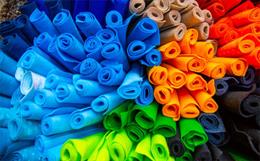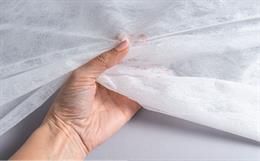Nonowovens &Advanced Materials Laboratory
Texas Tech University, USA
E-mail: &sec=article&uinfo=<%=server.URLEncode(3178)%>">s.ramkumar@ttu.edu
Prelude
Technical textiles arevalue-added textiles, which span the entire spectrum of the textile industry.These products are predominantly used for improving the life-style, protectingthe environment and enhancing human life. Simply put, technical textiles arefibrous materials produced and available in different forms and shapes such asmats, yarns, fabrics, composites, made-up goods and converted products whichcan be used in everyday life and are non-commodity items. Technical textilescan be made using different common, uncommon and combinatorial processes suchas weaving, knitting, nonwovens, composite formation, etc. Technical textilescan be even in raw fiber form depending on the end-use applications, need andeconomics. This sector is a growth segment within the textile industry.Technical textiles sector is one among a very few industrial sectors that isexpected to grow on par with the GDP. This has been the case historically andthe growth relationship between the GDP in PPP terms and the technical textilesindustry has been found to be linear. Therefore, based on historical data, evenin the current bleak economic scenario, this sector should witness a growth.The current value of the global technical textiles sector at the fabric levelthat includes nonwovens, industrial and specialty fabrics is roughly US$ 150billion. This number does not include the value of converted products at the consumerlevel and focuses on rollgoods or unconverted fabrics.
Accordingto the latest economic forecasts by PricewaterhouseCoopers, in 2011, the globaleconomy is expected to grow at 3.1%. The U.S., Western Europe, China, India, Brazil and Russia are expected to grow at 2.4, 1.3, 9.4, 8.5, 4.3 and 4.5 percentagerespectively. As is evident from the above predictions, high growth is expectedin BRIC nations and particularly in China and India. This positive economicforecast will be of immense benefit to India as it endeavors to spearhead thegrowth of its technical textiles industry. Based on the historical trends, the India technical textiles sector should grow around 8.5 percentage. The current estimate byGovernment of India is 11%. Our research at Texas Tech University in the recentpast has predicted a double-digit growth for the Indian technical textilessector. This was based on the GDP estimates by the World Bank and this growthestimate has been vindicated by the market survey conducted by ICRA ManagementConsultancy carried out through a project funded by the Ministry of Textiles, India. This article will highlight the current scenario of the Indian technical textilessector and will articulate a few steps that are necessary to boost this sectorin India.
Status of the Indian
Textiles Industry
Indias textile industry is a conventional industry dominated by cotton. According to a recent report by the Ministry of Textiles, India, there are 1834 textile mills with an installed capacity of 37 million ring spindles, 489,718 rotors and 56,526 looms. Compared to the capacity of the conventional textile industry, the nonwoven roll good production is between 80,000 and 100,000 metric tons. Textiles industry, which includes the nascent technical textiles sector, contributes 4% to the GDP and 14% to the industrial production. The two main reasons which make the Indian textiles industry strong are: 1) export earnings and 2) employment opportunities. Indias textiles industry employs some 35 million people directly and contributes 17% to the total export earnings of the country.
Need for Technical
Textiles Sector in India
The economic
strength of the Indian textiles industry comes from its export earnings. The
competitive advantage that India had in terms of its labor cost has been
eroding slowly and smaller nations such as Bangladesh and Vietnam due to
cheaper labor and trade agreements with the US and Europe are gaining
advantageous positions with regard to foreign trade. More recently, the decrease
in the consumer spending and the global economic recession has forced the
Indian textile industry to start thinking seriously about technical textiles.
The government and the industry are looking for diversification opportunities
to enlarge the overall market size of the Indian textiles industry. India textiles industry wants to reach the size of US $ 115 billion by 2012. The
expectation is that the technical textiles sector will contribute at least 10%
to the overall market size, which will be US $ 11.5 billion. The current value
of the Indian technical textiles sector is around US $8 billion. This means, Indias technical textiles sector has to nearly double in size in years ahead. All stake
holders, i.e., industry and trade associations, Government, industry related
trade associations and textile academia and working seriously to build a viable
technical textiles sector in India. In this connection, Government of India is
playing a significant role in creating awareness and developing a knowledge
base for the NWTT sector. Since mid 2000s, the government has supported many
technical awareness programs. Both INDA and EDANA have offered sector wise
training programs in major textile hubs such as Surat, Coimbatore, New Delhi, etc.
Market Size of Indias Technical Textiles Sector
In India, the value-added textiles industry is collectively grouped into to a single sector
commonly referred to as technical textiles. This sector encompasses fiber to
converted products industry. Indian technical textiles industry is nascent and
highly fragmented. Government of India sponsored a nation-wide market survey to
estimate the size, need and the growth potential of this industry. ICRA, a
management consultancy undertook the government sponsored study and has
estimated the current market size to be 398,760 million Indian rupees (~US
$8.86 billion). It is expected to grow at 11% to reach a size of 664,050 million
Indian rupees (~US $14.76 billion) by 2012-13. The consumption will be slightly
under the market size. The report divides the technical textiles sector into 12
segments as categorized by the TechTextil years
ago. The largest segments
are Packtech, Clothtech, Indutech and Meditech. In my opinion, the
categorization of the nascent Indian technical textiles into 12 segments is
premature and will cause confusions. There are several products that can fit
well in many segments and such a categorization for an emerging market may not
be suitable. In order to have an easier and useful segmentation from the point
of view of marketing, we have proposed a three way classification of the
technical textiles sector: 1) Consumer Products; 2) Institutional Products and
3) Government Procurement Products. Consumer products include personal care,
baby care and hygiene products. In this category, global brands such as Huggies
and Pampers have penetrated into the market. Major players are P&G,
Kimberly-Clark, SCA-Godrej and Johnson and Johnson. Products from these major
international companies are predominantly sold in pharmacies and retails stores
such as Birlas More and Big Bazaars. The consumers that use these products are
predominantly middle-income, upper middle class and those from the upper strata
of the society. The cost and the lack of awareness prohibit the penetration of
these products into the rural and low income areas. There will be growth in the
consumption of institutional products such as geotextiles, automotive textiles
and hospital products. India has a plan to build 20 kilometers of national
highway per day which will lead to more consumption of technical textiles
products. Government procurement category also offers scope as the Ministry of
Defense, Government of India has recently streamlined its procurement policies.
Those countries that have quality defense textiles products and liaison bodies
in India will have advantages over the others.
What the Indian NWTT
Sector Needs?
- There is an immediate need for the converting sector in India. Due to the growing domestic consumption and increase in wages, the need for consumer products at affordable rates will rise. International NWTT industry, machinery makers and trade bodies should look for win-win opportunities in the creation of converting clusters.
- India has adequate roll good manufacturers although not of high quality. The needs of the domestic market as of today can be met with the existing capacity. There are approximately 50 spunbond manufacturers with predominantly Chinese, Korean and Taiwanese machinery. The industry at present is reluctant to invest in high-end machinery as the market is not established and well built for marketing the products.
- Technical schools to educate and train skilled workers who can be employed in the growing NWTT sector are needed.
- Knowledge on converting roll goods to end-user products is needed. This also includes knowledge on chemical finishing and formulation developments.
- Marketing know-how and coordinated approach towards marketing are needed.
All stake holders have realized the need for a coordinated body to represent the interests of the growing technical textiles industry. The NWTT sector in India has just formed the Indian Technical Textiles Association (ITAA) with its current headquarters in Mumbai.
In 2008 (See
Nonwovens Industry magazine, February 2008), we predicted based on the
available GDP growth numbers for India from the World Bank, Indias NWTT sector
will grow at a rate of 13% in the following years. The government of India sponsored market survey by the ICRA consultancy is forecasting a growth of 11% per
annum. In a general sense, the growth will be in double digits. As elaborated
above, there is an emergent need to grow the converting sector, which will
spearhead the growth of other segments of the NWTT sector. Machinery makers,
fabric producers, fiber manufacturers and industry trade bodies should take
note of the above immediate needs of the Indian NWTT industry and the Indian
market and engage in relevant trade talks and promotional activities.
What is Next for the Indian Textile Industry?
The growing trade deficit in
developed nations such as the United States and United Kingdom has alarmed
these governments and others in the developed world. For example, according to
the United Kingdoms Office for National Statistics, imports from China into the UK have grown from 5 billion pounds in 2001 to about 25 billion pounds in 2009.
Whereas, the exports have not grown that much; in 2009, the exports amounted to
about 5 billion pounds only. United States and others have taken the liberty to
advise China and other developing nations such as Brazil, India and Russia to balance their trade by growing their domestic markets. This topic was at the
center stage in the recent G-20 summit in Seoul, South Korea. Apart from these
G-20 deliberations, due to population growth in emerging markets, particularly
in East and South Asian countries, there will be boost in domestic
consumption. There will be an increase in the consumption of food and
commodity items such as textiles. However, the market size in developed nations
will shrink due to increased savings, slowing of economy and slow down in the
growth of population. The textile industry in India has to adapt to these
changing landscapes. Therefore, it should diversify to meet the challenges of
the 21st century markets.
Technical Textiles: Is it
a Panacea?
With the changing economic
and social landscapes, the Indian textile industry should grow and diversify.
The technical textiles sector should grow, which can cater to both domestic and
export markets. This sector has created enormous buzz in the past five years.
Although this sector has received great attention from all stakeholders, good
number of projects has not evolved. I have articulated two main reasons for the
lack of growth: 1) lack of practical knowledge/experience and 2) lack of market
know-how. It looks like Government of India has taken note of these and is
unveiling a Technological Mission on Technical Textiles (TMTT) soon with an
investment of rupees 200 crores. In fact, I was privileged enough to learn about
it early on and broke the news about it in October this year. TMTT is a step in
the right direction. All stakeholders should join hands in making this mission
productive, useful and successful.
This Article was
distributed at the Technology Mission on Technical textiles (TMTT) 2010-11 to
2014-15 launches in MoT-FICC meeting on 20 Jan2011 in New Delhi, India.







